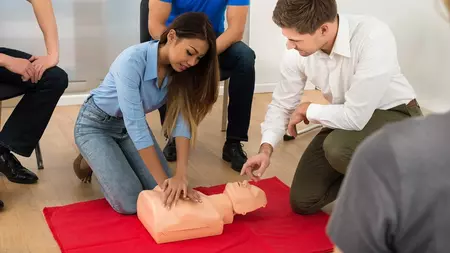CPR Training


CPR training, or Cardiopulmonary Resuscitation training, is designed to teach individuals the life-saving skills needed to respond to cardiac emergencies. CPR is a technique used to manually maintain blood circulation and provide oxygen to the body when a person's heart has stopped beating or is in a state of cardiac arrest. The training focuses on recognizing the signs of cardiac arrest, initiating the emergency response, and performing CPR effectively until professional medical help arrives.
A CPR training course, also known as a CPR course, covers a comprehensive range of topics related to cardiopulmonary resuscitation. This training equips participants with the necessary skills to respond effectively in cardiac emergencies. Key components of the training course include
CPR training courses are assessed through a combination of theoretical knowledge exams and practical skill evaluations. The theoretical assessment typically involves a written exam that test participants' understanding of CPR concepts, including recognizing cardiac arrest, performing chest compressions, and delivering rescue breaths. This assessment ensures that participants have a solid understanding of the theoretical aspects of CPR.
In addition to the theoretical assessment, practical skill evaluations are conducted to assess participants' ability to perform CPR techniques effectively. During these assessments, participants demonstrate their skills on manikins or simulation devices, under the observation of trainers or instructors. The practical assessments focus on factors such as correct hand placement, compression depth and rate, and proper delivery of rescue breaths. Participants receive feedback and guidance from instructors to enhance their technique and proficiency
The CPR course involves 4 hours of learning and is most commonly delivered by a trainer over one half classroom-based days.
The CPR training course can be conducted either at your own site, our training center in Derry, or alternatively, we can arrange a local venue for you anywhere in Northern Ireland.
CPR training is beneficial and recommended for various individuals, including:
CPR training is important as it equips individuals with life-saving skills, enabling them to respond immediately to cardiac emergencies and potentially save lives. With the ability to perform CPR, individuals can maintain blood flow and oxygenation until professional medical help arrives, significantly improving the chances of survival. CPR training also promotes community resilience, empowers bystander intervention, complements professional medical care, and instills confidence and preparedness in individuals to handle emergency situations effectively.